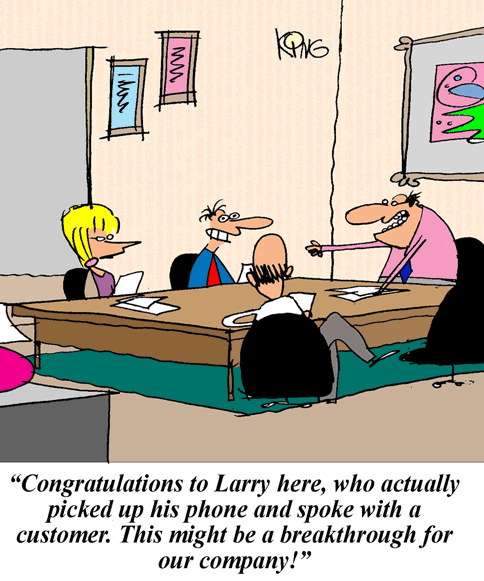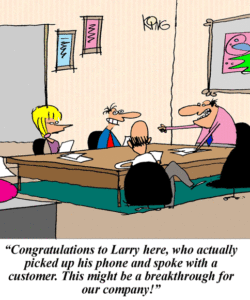21, 2017

How do SaaS companies typically find their first six-figure customer?
Question:
Obviously this depends on the market, product, etc. but generally speaking, how do SaaS companies land that first “big sale” (which I’ve arbitrarily defined as $100K+ in annual revenue). Is through their personal networks? Cold calling? Trade shows? Something else?
Of course there’s no right answer here. More interested in any patterns.
Answer:
Every story is different, but generally, I’d advise on these routes:
- Network. Most importantly, it is rarely going to be a first or second-level connection. You will probably need to work through several layers. For example, if you are selling a financial technology product for equity analysts and have a friend that is a trader at hedge fund, you’ll need to go two or three deep to find a connection. Your friend might trade bonds, so he’ll have to connect you with the equity trader at his fund who can then connect you with an equity analyst.
The key point in the process is the equity trader – you can’t depend on your friend to send him an email to forward to an analyst. You need to have a qualitative conversation with the equity trader so she understands your product and can provide a resounding recommendation to her equity analyst contact, otherwise you won’t get the meeting with the analyst. Treat every layer like a sale.
Have a Sales Question?
Grab a time to chat with Scott here.
Pro Tip #1: Never, ever assume someone will do the selling for you. You’re friend my say – “Send my your presentation and I’ll forward it to someone.” Do the work yourself. Get the contact info and personally contact each person in the chain. Besides, they’ll botch the message and won’t be able to answer basic questions that might derail the opportunity.
Pro Tip #2: Send a handwritten thank you card to everyone along the way.
Pro Tip #3: Definitely use LinkedIn here.

- Conferences/Trade Shows. But… you need not attend. Simply go to the event website and find the speaker and attendee list. These people are inherently biased towards buying your new product. Why? Because they care enough about their jobs and professions to travel and interact to develop and share new ideas. (Not always the case, but more times than not…)
Use that as a call list. You can even say – “Hi Bill, I saw that you’re speaking the Blah Blah Enterprise Software for the Cloud conference next month. Because I won’t be attending, I’d like to share a few ideas with you either before or after the event related to your talk. Are you available on Tuesday for a call?” Bingo. Now you’re in a sales process with this person/company.
As a start-up, you need early adopters plus these types people are out circulating in the industry, which means that you can use them as case studies and for references down the road when you hit the fat part of the market.
- Get a voice. Webinars, white papers, regular email drips, blog posts, emailing interesting news articles to the appropriate people on your contact list. This will generate conversation and showcase both your industry expertise and passion for the business.
- Alpha/Beta Testers. Sounds obvious, but I see lots of companies launch their product then go look for customers. Seems like you’d want to have a little help assuring you’re hitting the mark with your product to me.
Pro Tip #1: Proceed with caution. The product you build based on the specifications for Big Company Beta Tester may not be valid for the rest of the market. Keep selling and talking to the rest of the market while you’re developing the product around these beta test specs so you’re not stuck with a non-scalable sales or product development process.
Pro Tip #2: Have the terms of the beta test developed ahead of time – expectations, benchmarks, length of test, and conversion from ‘beta’ to ‘paying.’ It’s easy to fall into a perpetual beta test mode. Twelve months later, your beta tester is still asking you to make changes without fronting a dime for development or a subscription while telling you – “Okay, so just make this one last change and then we can start paying…”
If possible, put this is a Work Agreement or Contract that requires their legal and vendor management approval. the end users might be able to try new products willy-nilly but ultimately be unable to have a purchase approved. You may not always be able to do this upfront, and if you can’t have an agreed-upon plan during the beta test when the business side of the interaction will take place.
**This Q&A article was originally posted on Quora. Check out Scott’s Quora page here.
